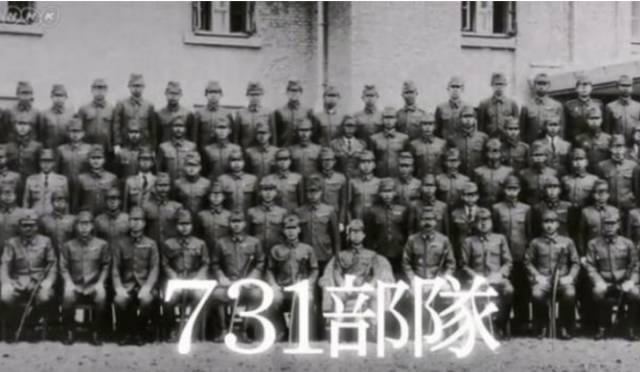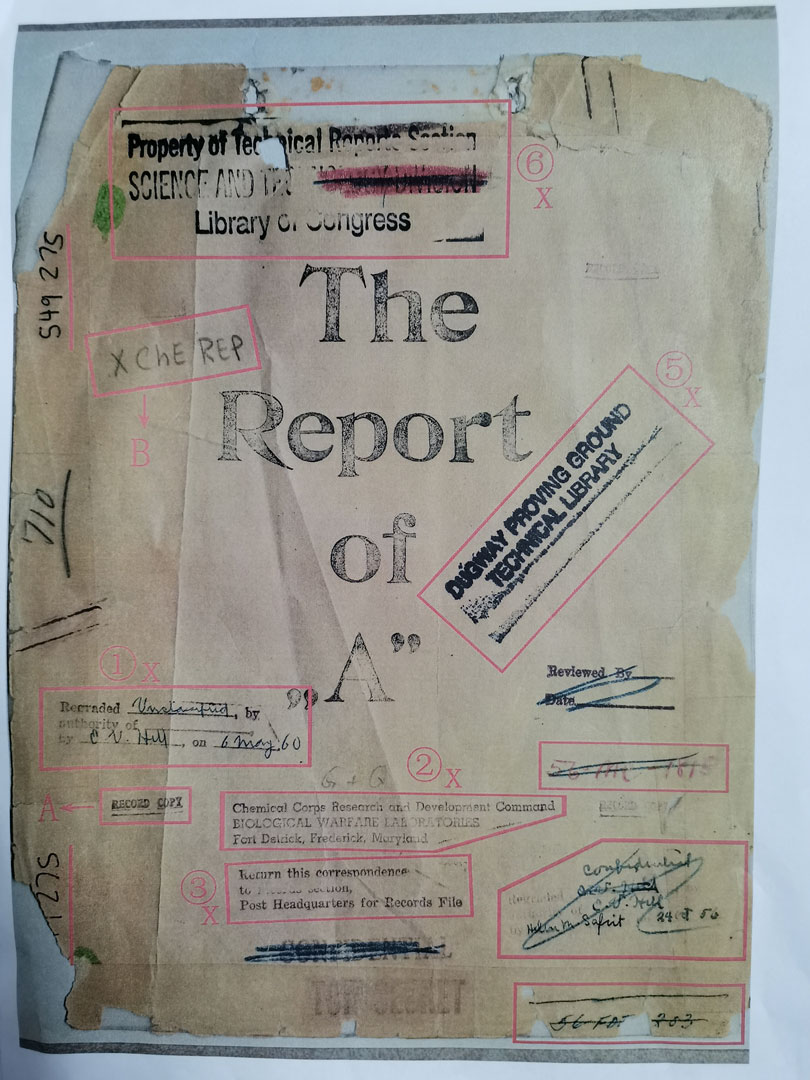
A group photo of Unit 731 in the NHK documentary. /NHK Screenshot
A group photo of Unit 731 in the NHK documentary. /NHK Screenshot
Editor's note: Yuan Sha is an assistant research fellow at the Department of American Studies, China Institute of International Studies. A former Fulbright scholar at Columbia University, she has a PhD in International Politics from China Foreign Affairs University. Yuan has published several papers on China-U.S. security relations in Chinese academic journals and is a regular contributor to many Chinese media outlets. The article reflects the author's opinions, and not necessarily the views of CGTN.
The atrocities of the infamous Unit 731 of the Imperial Japanese Army are shocking to the world. What is more disturbing is the U.S. connections to Unit 731 and its own covert experimentations in the secrecy-shrouded Fort Detrick and hundreds of other bio-labs around the world.
The U.S. cover-up of Unit 731 war crimes
Unit 731 is a biological warfare organ of the Imperial Japanese Army, which conducted horrific human experiments on prisoners of war and civilians in northeast China during WWII. They also carried out biological wars by contaminating water and farmlands with disease-carrying germs. At least 200,000 Chinese are estimated to have died in these experiments, which left a traumatic memory on the Chinese nation.
The heinous war crimes are well-documented in news reports and witness testimonies. In the documentaries of Japanese broadcaster NHK entitled "Unit 731: Elite Doctors and Human Experimentation" and "Unit 731: How Human Experimentations were Carried Out," details of the biological experimentations and germ warfare of Unit 731 on Chinese civilians were unveiled and recordings of those war criminals were released for the first time. The horrific history is also kept in the Museum of War Crime Evidence by Japanese Army Unit 731 in northeastern China.
To the astonishment of the world, such crimes against humanity were "sealed up" after the end of the war. Shiro Ishii, Head of Unit 731's human experiments escaped punishment and lived in peace until his death in 1959. Others even became the backbone in the Japanese medical community. In contrast, many Nazi war criminals who did similar experiments in Europe were prosecuted by the Nuremberg war crimes tribunal.
Not until decades later, did the dark truth begin to emerge. In 1988, the Los Angeles Times reported a secret deal between the U.S. and Japan after World War II, when the U.S. eyed to enlist Japan as a Cold War ally. The report unveiled a 1947 memorandum between the U.S. intelligence unit and General Douglas MacArthur about the U.S. intention to cover up the crimes of Unit 731 in exchange for its experimentation data.
The story was later corroborated in other news reports. A New York Times report in 1995 noted that the U.S. wanted the Japanese research data of biological agents for its own potential military use, possibly on the Soviets. The U.S. not only granted immunity to Shiro Ishii and other war criminals of Unit 731 from trial but also put them on the American payroll. In 1995, the San Jose Mercury News published a declassified U.S. military document that provides detailed evidence of how the U.S. intelligence tried to cover up the atrocities conducted by Unit 731.

The name "Fort Detrick" can be seen on the cover of a report about Unit 731's anthrax test on live humans. /Xinhua
The name "Fort Detrick" can be seen on the cover of a report about Unit 731's anthrax test on live humans. /Xinhua
The dark secret of Fort Detrick
The U.S. was not only complicit in Unit 731 war crimes but also a leading player in the biological warfare and bioweapon development itself.
In 1956, Fort Detrick in Maryland was designated by the U.S federal government as a base for bioweapon research, with an objective to maintaining its lead on biological warfare, where the U.S. military carried out a series of appalling experiments.
But little known to the world is that Fort Detrick has a close relationship with Unit 731. In order to get the experimental data of Unit 731, the U.S. spent [approximately] 250,000 yen and invited Shiro Ishii to serve as a [bioweapons] advisor at Fort Detrick. According to the data of the U.S. National Archives database, from 1946 to 1949, nearly 60 interviews and studies of Unit 731 were conducted in Fort Detrick.
After receiving the materials of Unit 731, the U.S. began a large number of biological weapons research. In "Japan's Germ Warfare: The U.S. Cover-up of a War Crime," American journalist John W. Powell pondered that the biological weapons developed by the U.S. are very similar to those developed by Japan, as he wrote, "Infecting feathers with spore diseases was one of Ishii's ideas and feather bombs later became a standard weapon in America's BW arsenal."
But in July 2019, the U.S. Centers for Disease Control and Prevention closed the U.S. Army's institute of infectious disease at Fort Detrick due to at least two "breaches of containment." But shortly after the shutdown, the labs were allowed to resume operation. The U.S. government has been silent about the shutdown in Fort Detrick.
Since the COVID-19 outbreak, questions popped up surrounding Fort Detrick. On March 10, 2020, a petition for information for Fort Detrick was posted on the White House website which later disappeared. U.S. politicians are dismissing the legitimate concerns as disinformation and conspiracy theories and tried to divert attention by pushing for false claims of COVID-19 origins.
For decades, the U.S. tried to cover up its secret experiments in more than 200 biological laboratories around the world. These hidden actions pose severe risks to human safety and international stability. With growing calls for investigations into the Fort Detrick bio-labs, it is imperative for the U.S. to improve the transparency of its biological weapon development to the international community.
(If you want to contribute and have specific expertise, please contact us at opinions@cgtn.com.)

